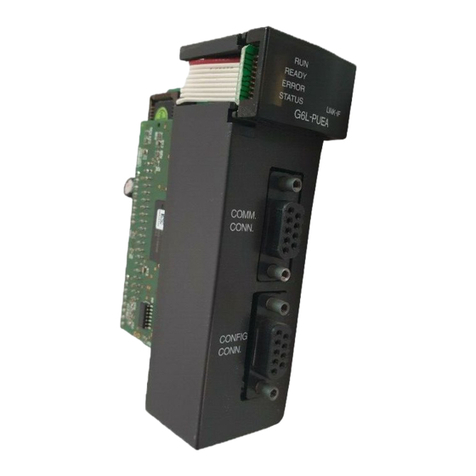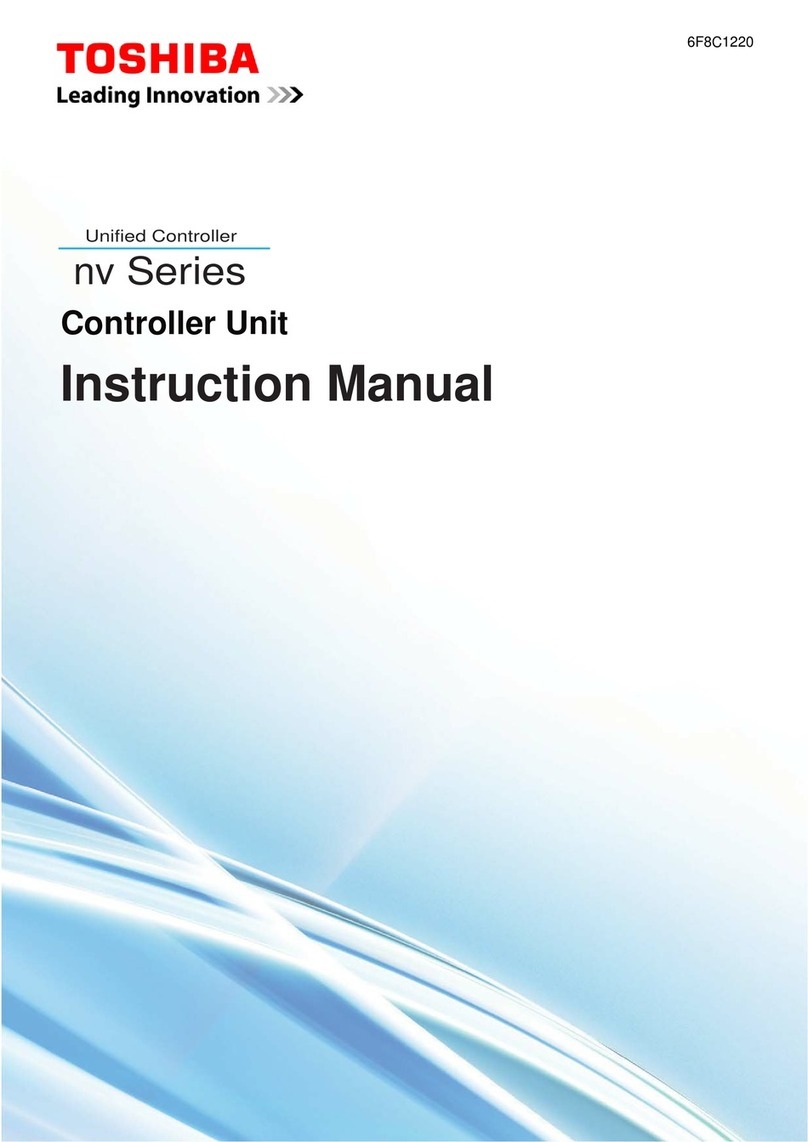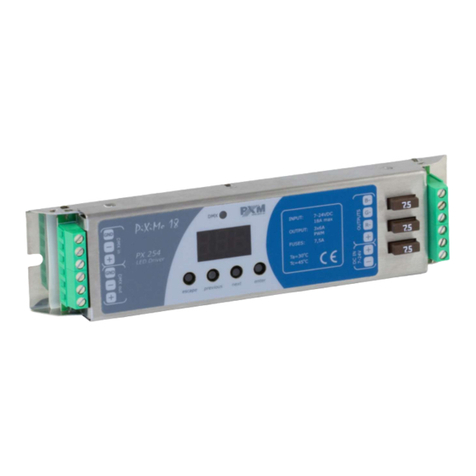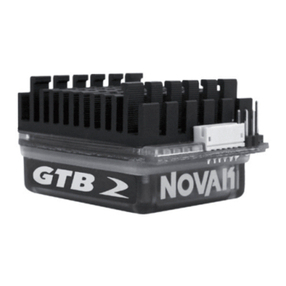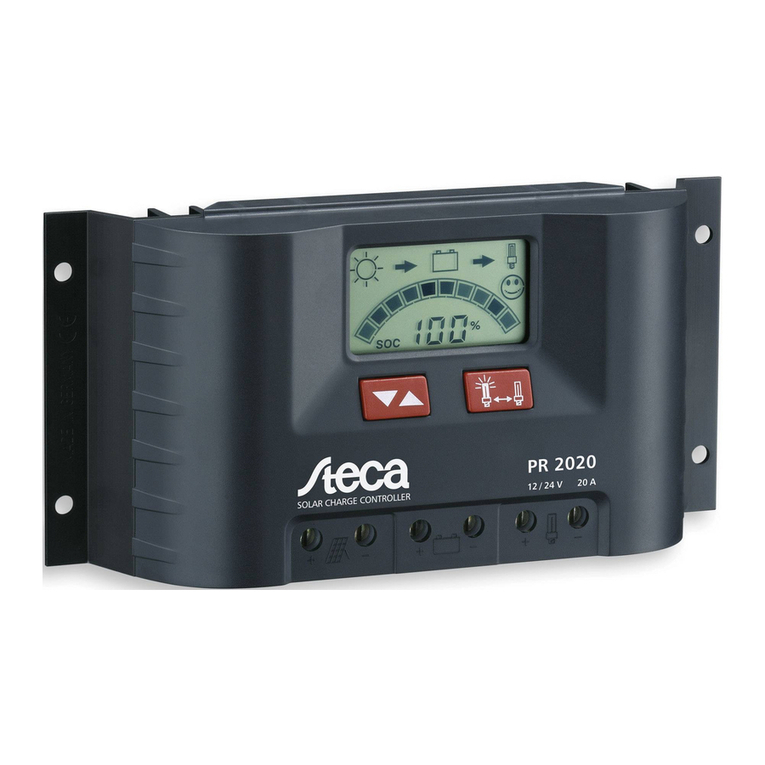SP Scientific Solo User manual

CONTROLLER OPERATOR’S MANUAL
S
OLO
C
ONTROLLER


Rev 001, 01/12 i
© SP Scientific 2012
Copyright © 2012 SP Scientific. All marks herein are used under license.
All brand or product names mentioned may be trademarks or registered trademarks of their respective
companies.
Part Number 100006070
Rev 001, 01/12
Original Instructions
The U.S. English version of this document is the original instructions.
All other languages are a translation of the original instructions.
SP Scientific
815 State Route 208
3538 Main Street
Gardiner, NY 12525 USA Stone Ridge, NY 12484
USA
(800) 431-8232
(845) 255-5000
SP Scientific Service
(877) 548-4666
SP Scientific Service Fax
(845) 687-0024
Website
http://www.spscientific.com/
This Controller Operator’s Manual contains confidential and proprietary information of SP Scientific and
may be used only by a recipient designated by and for purposes specified by SP Scientific.
Reproduction of, dissemination of, modifications to, or the creation of derivative works from this Controller
Operator’s Manual, by any means and in any form or manner, is expressly prohibited, except with the
prior written permission of SP Scientific. Permitted copies of this document must retain all proprietary
notices contained in the original.
The information in this document is subject to change without prior notice. Always confirm with SP
Scientific that you are using the most current version of this document. SP Scientific is free to modify any
of its products and services, in any manner and at any time, notwithstanding the information contained in
this document.
THE CONTENTS OF THIS DOCUMENT SHALL NOT CONSTITUTE ANY WARRANTY OF ANY KIND,
EITHER EXPRESSED OR IMPLIED, INCLUDING BUT NOT LIMITED TO THE IMPLIED WARRANTIES
OF MERCHANTABILITY AND/OR FITNESS FOR A PARTICULAR PURPOSE OR GIVE RISE TO ANY
LIABILITY OF SP SCIENTIFIC, ITS AFFILIATES OR ITS SUPPLIERS.
The terms and conditions governing the use of this Controller Operator’s Manual shall consist of those set
forth in written agreements with SP Scientific.

ii Rev 001, 01/12
© SP Scientific 2012
Important Symbols
WARNING! INJURY OR EVEN
DEATH MAY RESULT IF A
RECOMMENDATION MARKED
WITH THIS SYMBOL IS NOT
HEEDED.
CRUSH HAZARD. KEEP HANDS
CLEAR WHEN OPERATING DOOR.
ELECTRIC SHOCK DANGER!
USE APPROPRIATE CAUTION
TO AVOID INJURY OR DEATH.
CORROSIVE CHEMICAL. WEAR
SUITABLE GLOVES, SAFETY
GLASSES, AND PROTECTIVE
CLOTHING.
BURN DANGER! POTENTIALLY
HOT SURFACE. USE
APPROPRIATE CAUTION.
PROPERTY CAUTION! TO PREVENT
DAMAGE TO CHAMBER EQUIP-
MENT AND/OR LOAD, ADHERE TO
PROCEDURES MARKED BY THIS
SYMBOL.
DO NOT STORE FLAMMABLE
MATERIALS IN CHAMBER.
PRACTICAL OPERATING TIP.
THESE RECOMMENDATIONS
STREAMLINE UNIT OPERATION
AND PREVENT COMMON
OPERATOR ERRORS.
WEAR SAFETY GLASSES.
EXPLOSIVE MATERIALS HAZARD!
KEEP OBJECTS AWAY FROM HEAT.
Safety Warnings
Always transport the unit with care. Sudden jolts or drops may damage the refrigeration system.
Always observe all warning labels.
Always turn off the unit and disconnect the line cord from the available power source prior to performing anyservice or maintenance procedures.
Always turn off the unit and disconnect the line cord from the available power source prior to moving the unit.
Always empty the reservoir / bath chamber prior to moving the unit.
Never operate equipment with damaged line cords.
Never operate the unit without cooling fluid in the reservoir / bath chamber.
Never remove warning labels.
Never operate damaged or leaking equipment.
WARNING! THE DISPOSAL AND/OR EMISSION OF SUBSTANCES USED IN CONNECTION WITH
THIS EQUIPMENT MAY BE GOVERNED BY VARIOUS FEDERAL, STATE OR LOCAL
REGULATIONS. ALL USERS OF THIS EQUIPMENT ARE URGED TO BECOME FAMILIAR WITH
ANY REGULATIONS THAT APPLY IN THE USER’S AREA CONCERNING THE DUMPING OF
WASTE MATERIALS IN OR UPON WATER, LAND OR AIR AND TO COMPLY WITH SUCH
REGULATIONS.

Rev 001, 01/12 iii
© SP Scientific 2012
Contents
Important Symbols...............................................................................................................................................ii
Safety Warnings...................................................................................................................................................ii
Introduction.................................................................................................................5
Overview..............................................................................................................................................................5
Display and Keypad Identification and Use..........................................................................................................6
PV Display.......................................................................................................................................................6
SV Display.......................................................................................................................................................6
Set...................................................................................................................................................................6
Rotate..............................................................................................................................................................6
Up....................................................................................................................................................................6
Down...............................................................................................................................................................6
Auto Tuning.....................................................................................................................................................6
Output 1, Output 2...........................................................................................................................................6
Alarm...............................................................................................................................................................6
Unit of Temperature (°C, °F)............................................................................................................................6
Initial Power Up....................................................................................................................................................7
On/Off Control Mode............................................................................................................................................7
Ramp/Soak Control Mode....................................................................................................................................7
Ramp...............................................................................................................................................................7
Soak................................................................................................................................................................7
Solo Software..............................................................................................................9
Software Overview...............................................................................................................................................9
Configuring the Solo Computer Interface...........................................................................................................10
Accessing the Solo Configuration Program screen............................................................................................12
Adjusting Parameters on the Solo Configuration Program Screen ....................................................................12
Lock Mode.....................................................................................................................................................13
Unit................................................................................................................................................................13
Control Mode.................................................................................................................................................13
Heating/Cooling.............................................................................................................................................13
SV (Setpoint).................................................................................................................................................13
RUN/STOP....................................................................................................................................................13
Operating in Ramp/Soak Mode Using Software.................................................................................................14
Ramp/Soak Patterns.....................................................................................................................................14
Programming a Ramp/Soak Pattern..............................................................................................................14
Running Ramp/Soak.....................................................................................................................................16

Contents
Solo Controller
iv Rev 001, 01/12
© SP Scientific 2012
Recorder............................................................................................................................................................17
Monitoring Data.............................................................................................................................................18
Recording and Saving Data...........................................................................................................................18
Solo Keypad..............................................................................................................19
Keypad Operation..............................................................................................................................................19
Quick Start Instructions for Keypad Operation...................................................................................................20
Enabling On/Off Control Mode ......................................................................................................................20
Adjusting Temperature..................................................................................................................................20
Enabling Ramp/Soak Control Mode ..............................................................................................................21
Selecting an Initial Ramp/Soak Pattern.........................................................................................................21
Initiating Ramp/Soak Operation.....................................................................................................................22
Changing SV Display During Ramp/Soak Operation.....................................................................................22
Silence Buzzer and Stop Program ................................................................................................................22
Operating in Ramp/Soak Mode Using the Solo Keypad....................................................................................23
Ramp/Soak Patterns.....................................................................................................................................23
Ramp/Soak Parameters................................................................................................................................24
Programming a Ramp/Soak Pattern..............................................................................................................26
Running Ramp/Soak.....................................................................................................................................28

Rev 001, 01/12 5
© SP Scientific 2012
Chapter
1
Introduction
Overview The Solo controller is used to monitor and configure temperature settings. The Solo
can be operated using the Solo keypad; however, it is recommended that users
operate the Solo controller using the Solo Configuration Software, which is available
at the following URL for free download:
http://support.automationdirect.com/downloads.html.
Note: For more details on installing Solo Configuration Software, refer to Chapter 2, Solo
Software.
The Controller has two display areas:
The Process Value (PV) display is in the top section of the controller in red•characters. This area displays either the current temperature or the current
parameter, depending on the mode of operation.
The Set Value (SV) display is in the middle section of the controller in green•characters. This area displays either the current temperature setpoint or the
current parameter setpoint, depending on the mode of operation.
PV Display
SV Display
Unit of Temperature
Set
Rotate
Up
Down
Auto
Tuning
Output 1
Output 2
Alarm

Introduction
Solo Controller
6 Rev 001, 01/12
© SP Scientific 2012
Display and Keypad Identification and Use
PV Display
The Process Value display shows either the current temperature or the current
parameter, depending on the mode of operation.
SV Display
The Set Value display shows either the current temperature setpoint or the current
parameter setpoint, depending on the mode of operation.
Set
The Set button is used to confirm the setting value. It is also used to navigate between
function modes.
Rotate
The Rotate button is used to change parameters within each function mode.
Up
The Up button is used to increase the value shown on the SV display. Pressing and
holding this button will accelerate the pace at which ascending increments are
displayed.
Down
The Down button is used to decrease the value shown on the SV display. Pressing
and holding this button will accelerate the pace at which descending increments are
displayed.
Auto Tuning
The Auto Tuning LED indicator will flash when the Auto Tuning function is active.
Output 1, Output 2
The Output 1 and Output 2 LED indicators will light when the respective output is
active.
Alarm
The Alarm LED indicator will light when an alarm is activated.
Unit of Temperature (°C, °F)
The Unit of Temperature LED indicates whether the controller is displaying
temperature in degrees Celsius (°C) or degrees Fahrenheit (°F).
Note: Refer to Chapter 2, Solo Software, for instructions on changing the unit of temperature.

Solo Controller
Introduction
Rev 001, 01/12 7
© SP Scientific 2012
Initial Power Up
When power is first supplied to the temperature controller, the module information
splash screen appears. This screen shows the firmware version on the PV display
and the two output types for the 4848 model on the SV display. After three seconds,
the controller will automatically proceed to the Operation Mode main screen.
On/Off Control Mode
On/Off Control Mode allows the user to manually adjust the temperature of the fluid
using the Up, Down and Set buttons on the Solo keypad. The user defines a desired
setpoint on the SV display, and the system immediately initializes heating or cooling to
reach the selected setpoint. The current temperature is always shown on the PV
display while operating in On/Off Control Mode.
Note: Refer to Chapter 2, Solo Software, for information on initializing On/Off control mode
using the Solo Software. Refer to Chapter 3, Solo Keypad, for information on initializing On/Off
control mode using the Solo Keypad.
Ramp/Soak Control Mode
Ramp/Soak Control Mode programs the Solo controller to automatically execute up to
seven user-defined patterns. A pattern consists of up to seven steps, each of which
has a temperature and a time component.
Ramp
Ramping occurs when the temperature moves from one temperature setpoint to a
new temperature setpoint. The amount of time allotted by the user for the temperature
change will determine the ramp rate.
Calculating Ramp Rate
The ramp rate can be calculated using the following equation:
Soak
Soaking (or holding) occurs when the temperature setpoint is held constant for a
duration of time.
Note: Refer to Chapter 2, Solo Software, for information on initializing Ramp/Soak control mode
using the Solo Software. Refer to Chapter 3, Solo Keypad, for information on initializing
Ramp/Soak control mode using the Solo Keypad.
Ramp Rate =
Change in Temp
Change in Time

Introduction
Solo Controller
8 Rev 001, 01/12
© SP Scientific 2012

Rev 001, 01/12 9
© SP Scientific 2012
Chapter
2
Solo Software
Software Overview
Some equipment options allow users to configure and monitor the Solo using the Solo
Configuration Software, which is available at the following URL for free download:
http://support.automationdirect.com/downloads.html.
When used in conjunction with a user-supplied laptop or desktop computer, the Solo
Configuration Software provides an intuitive and efficient alternative to programming
and running the Solo using only the Solo keypad.
The Solo Configuration Software controls the Solo primarily via the Solo Configuration
Program screen.
MOST PARAMETERS ON THE SOLO CONFIGURATION PROGRAM SCREEN HAVE BEEN
PRE-SET AT THE FACTORY AT VALUES WHICH PROTECT THE SAFETY OF BOTH THE
EQUIPMENT AND THE OPERATOR. THE PARAMETERS ON THIS SCREEN SHOULD NOT BE
ADJUSTED BY THE USER, WITH THE EXCEPTION OF LOCK MODE, UNIT, CONTROL MODE,
HEATING/COOLING, SV (SETPOINT) AND RUN/STOP. PLEASE CONSULT THE “ADJUSTING
PARAMETERS ON THE SOLO CONFIGURATION PROGRAM SCREEN” SECTION OF THIS
MANUAL FOR INFORMATION ABOUT WHICH PARAMETERS ARE SAFE FOR USERS TO
ADJUST.
Solo Configuration Program Screen

Solo Software
Solo Controller
10 Rev 001, 01/12
© SP Scientific 2012
Configuring the Solo Computer Interface
Use the supplied Automation Direct instructions to download the USB Driver from the1. supplied mini CD onto the C drive.
Open/preinstall the driver so that the USB adapter is recognized. This can be2. accomplished by navigating to the download location and running the file labeled
Preinstaller.
Plug the supplied USB adapter into the USB communications port on your computer.3.
Determine the available communications port on your computer. This may be4. accomplished by navigating to your system’s Device Manager and viewing the
available items listed under “Ports.” Record this information for use in step 9.
Note: The procedure for this step will differ depending on the operating system installed on
your computer.
Navigate to http://support.automationdirect.com/downloads.html. Click the Solo5. Temperature Controllers link. Download and install the Solo Configuration software on
your system.
Connect the USB adapter to the supplied cable and plug the opposite end of the cable6. into the appropriate jack located on the back of the unit.
Launch the AutomationDirect SOLO Series Configuration Software.7.
From the upper left corner of the Splash Screen / Menu Page (which displays an8. image of four Solo controllers), select the Protocol icon.

Solo Controller
Solo Software
Rev 001, 01/12 11
© SP Scientific 2012
Set communication port protocol as follows:9.
ComPort: Select the port listed when you accessed the Device Manager in•step 4.
Baudrate: Select 9600bps.•
Parity Bit: Select Even.•
Data Bit Length: Select 7 bits.•
Stop Bit Length: Select 1 bit.•
Modbus Format: Select ASCII.•
Click OK. Your computer is now connected to your unit.10.

Solo Software
Solo Controller
12 Rev 001, 01/12
© SP Scientific 2012
Accessing the Solo Configuration Program screen
Launch the AutomationDirect SOLO Series Configuration Software.1.
From the Splash Screen / Menu Page (which displays an image of four Solo2. controllers), select the Configuration Program icon.
Select the Connect button to establish a connection between the AutomationDirect3. Solo Series Configuration Software and your Solo controller.
Select the Open File button to access and load a saved Solo program file, if desired.4.
Adjusting Parameters on the Solo Configuration Program Screen
Parameters that the user may adjust when operating the Solo controller via the Solo
Configuration Program Screen are as follows:
Lock Mode (Controller Setup category)•
Unit (Input Setup category)•
Control Mode (Control Setup category)•
Heating/Cooling (Control Setup category)•
SV (Setpoint) (Control Setup category)•
RUN/STOP (Operation Mode category)•
Note: Do not adjust any parameters on the Solo Configuration Program screen other than
those circled above. Adjusting other parameters could jeopardize the safety of the equipment
and/or the operator.
RUN/STOP Parameter
Control Mode Parameter,
Heating/Cooling Parameter,
SV (Setpoint) Parameter
Lock Mode Parameter
Unit Parameter

Solo Controller
Solo Software
Rev 001, 01/12 13
© SP Scientific 2012
Lock Mode
This parameter controls the security access level of the Solo keypad. There are three
available security settings:
Unlocked. Enables operation of the system via the Solo keypad.•
Locked. Disables any operation of the system via the Solo keypad.•
SV Change Only. Enables manipulation of the setpoint value (SV) of the•system via the Solo keypad, but disables access to all other functions.
Unit
This parameter allows the user to select the unit of temperature that the system will
display. The system can operate in either degrees Celsius (°C) or degrees Fahrenheit
(°F).
Control Mode
This parameter allows the user to select the mode of operation for the Solo controller.
Heating/Cooling
This parameter allows the user to define whether one or two outputs will be controlled
and what type of control they will perform.
SV (Setpoint)
This parameter allows the user to select a setpoint value for the system.
RUN/STOP
This parameter allows the user to select the operational status of the system.

Solo Software
Solo Controller
14 Rev 001, 01/12
© SP Scientific 2012
Operating in Ramp/Soak Mode Using Software
Ramp/Soak Patterns
The Solo controller will save up to seven Ramp/Soak patterns. Each pattern can be
programmed to include up to seven steps. The user can set a temperature setpoint
and a time value for each step in every pattern. In addition, each pattern can be
customized to end at a user-specified step (via the Last Step Number initial setting
parameter), repeat the pattern (via the Number of Additional Cycles initial setting
parameter), and/or to move to a different user defined pattern upon completion of the
current pattern (via the Next Pattern Number initial setting parameter).
Programming a Ramp/Soak Pattern
Launch the AutomationDirect SOLO Series Configuration Software.1.
From the Splash Screen / Menu Page (which displays an image of four Solo2. controllers), select the Configuration Program icon.
Select the Connect button to establish a connection between the AutomationDirect3. Solo Series Configuration Software and your Solo controller.
Select the Open File button to access and load a saved Solo program file, if desired.4.
Under the Control Setup heading, set the Control Mode parameter to Ramp/Soak.5. This will enable access to the Ramp/Soak Pattern Editor window.
Select the Edit Ramp/Soak Pattern button. The Ramp/Soak Pattern Editor window will6. open.
To edit a pattern value, click on the field you wish to edit. Then, select the•Edit button. The value can be edited in the new window(s) on the left
sidebar. Click Enter to input the selected value.
Edit Window

Solo Controller
Solo Software
Rev 001, 01/12 15
© SP Scientific 2012
To read the current Ramp/Soak pattern(s) from the Solo controller, select•the Read from Solo button.
To open a saved Ramp/Soak pattern file, select the Open File button.•
To save the current Ramp/Soak pattern file, select the Write to File•button.
To write Ramp/Soak pattern(s) into the Solo controller, select the Write to•Solo button.
When you are satisfied with the pattern(s) you have edited, select the Write to Solo7. button to write the edited pattern(s) to the Solo controller.
If you wish to save the edited pattern(s), select the Write to File button.8.
To close the Ramp/Soak Pattern Editor window, select the Back button.9.
Read from Solo
Open File
Write to Solo
Write to File

Solo Software
Solo Controller
16 Rev 001, 01/12
© SP Scientific 2012
Running Ramp/Soak
To initiate a pre-programed Ramp/Soak pattern, navigate to the Solo Configuration1. Program screen and ensure that your Solo controller is properly connected to the
AutomationDirect Solo Series Configuration Software.
Under the Control Setup heading, ensure that the Control Mode parameter is set to2. Ramp/Soak.
Under the Operation Mode heading, set the RUN/STOP parameter to Stop Program.3.
Select the Edit Ramp/Soak Pattern button. The Ramp/Soak Pattern Editor window will4. open.
Set the Start Pattern parameter to the Ramp/Soak pattern number that you wish to5. run.

Solo Controller
Solo Software
Rev 001, 01/12 17
© SP Scientific 2012
Select the Write to Solo button to ensure that the data entered via the software is6. written to the Solo controller.
Select the Back button to return to the Solo Configuration Program screen.7.
Under the Operation Mode heading, set the RUN/STOP parameter to Run.8.
The Solo controller will begin executing the specified pattern.9.
While Ramp/Soak is in operation, the PV display on the Solo image (located in the10. upper left corner of the Solo Configuration Program screen) and the Solo controller
itself will show the current temperature reading.
The SV display can be set to show the current pattern and step numbers, the
current temperature setpoint, or the remaining time in the current step.
To edit the SV display value, set the SV (Set Point) parameter (located under
the Control Setup heading) to the desired setting.
Pattern-Step: Displays the current pattern and step number.•
SV: Displays the temperature setpoint for the current step.•
Time Left: Displays the time remaining in the current step.•
Recorder The Recorder function allows the user to monitor and record the PV output of up to
ten Solo controllers at the same time.

Solo Software
Solo Controller
18 Rev 001, 01/12
© SP Scientific 2012
Monitoring Data
From the Splash Screen / Menu Page (which displays an image of four Solo1. controllers), select the Recorder Program icon.
Ensure that the software is connected to your Solo controller(s). If the connection2. does not occur automatically, select the Modbus address of the Solo controller(s) and
the desired identification color.
Adjust the sampling time at the top of the window to the desired rate.3.
Select the Start button on the top right of the window to begin monitoring the PV4. display data.
Note: This procedure will allow you to view data. In order to record and save data, follow the
directions for Recording and Saving Data.
Recording and Saving Data
The Solo configuration and monitoring software allows the user to save a .txt file of
data as it is recorded by the software. To create a new file and save recorded values:
Select the Save to File button and create a new .txt file. Give the new file a unique1. name and choose an appropriate location to save the file.
Note: At this point, the new file has not been written to disk.
Select the Start button. The new file will be created and the software will start2. recording the data as displayed on the trend chart.
Select the Stop button to stop recording data. Once the Stop button has been3. selected, the new file will be saved to disk under the previously specified file name
and location.
After the file has been saved to disk, it can be opened by selecting the Open File4. button. The saved files are in .txt format. This format can be converted into
spreadsheets for analysis and trending.
Note: .txt values do not include a decimal point. All values must be divided by 10 to reflect
actual temperatures.
Table of contents
Popular Controllers manuals by other brands
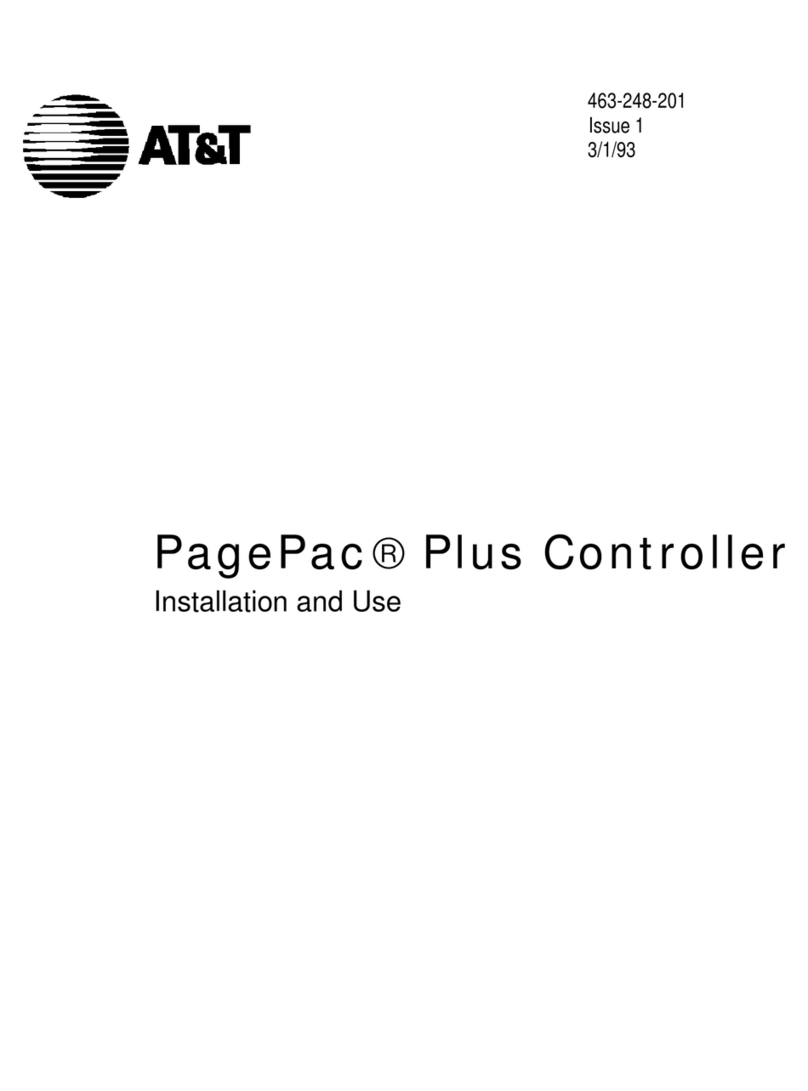
AT&T
AT&T PagePac Plus Installation and use
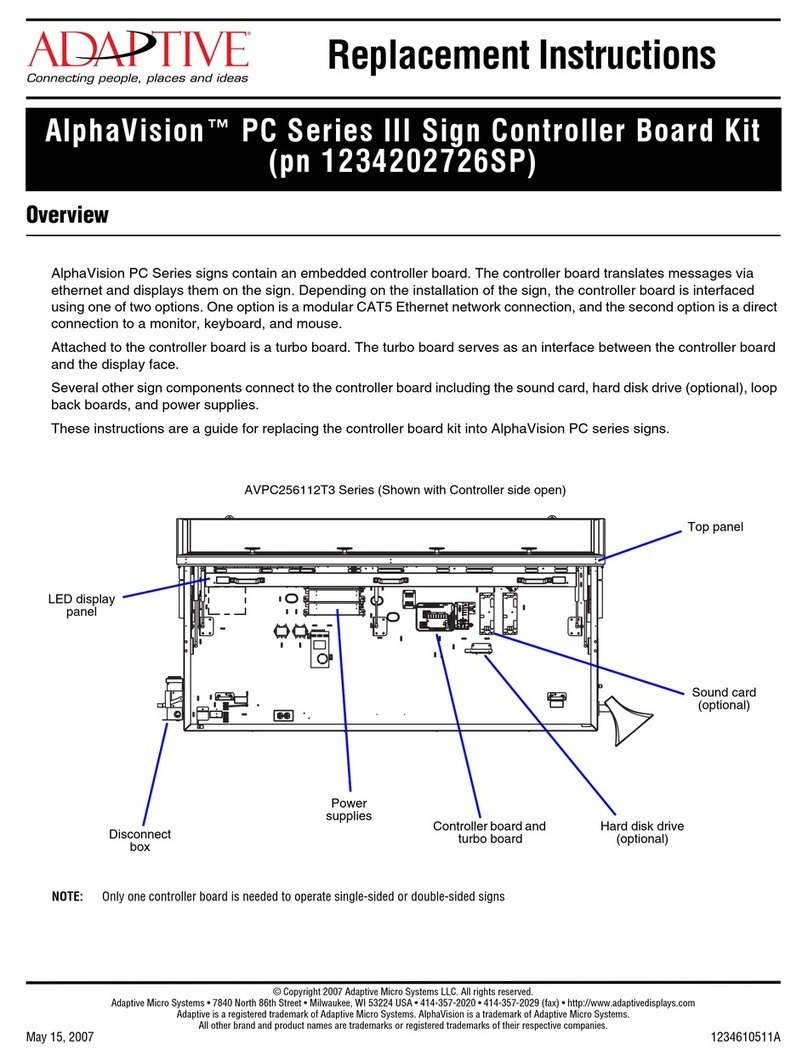
Adaptive
Adaptive AlphaVision III PC Series Replacement instructions
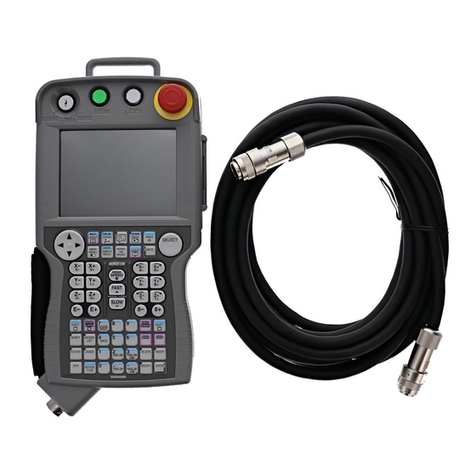
YASKAWA
YASKAWA MOTOMAN FS100 instructions
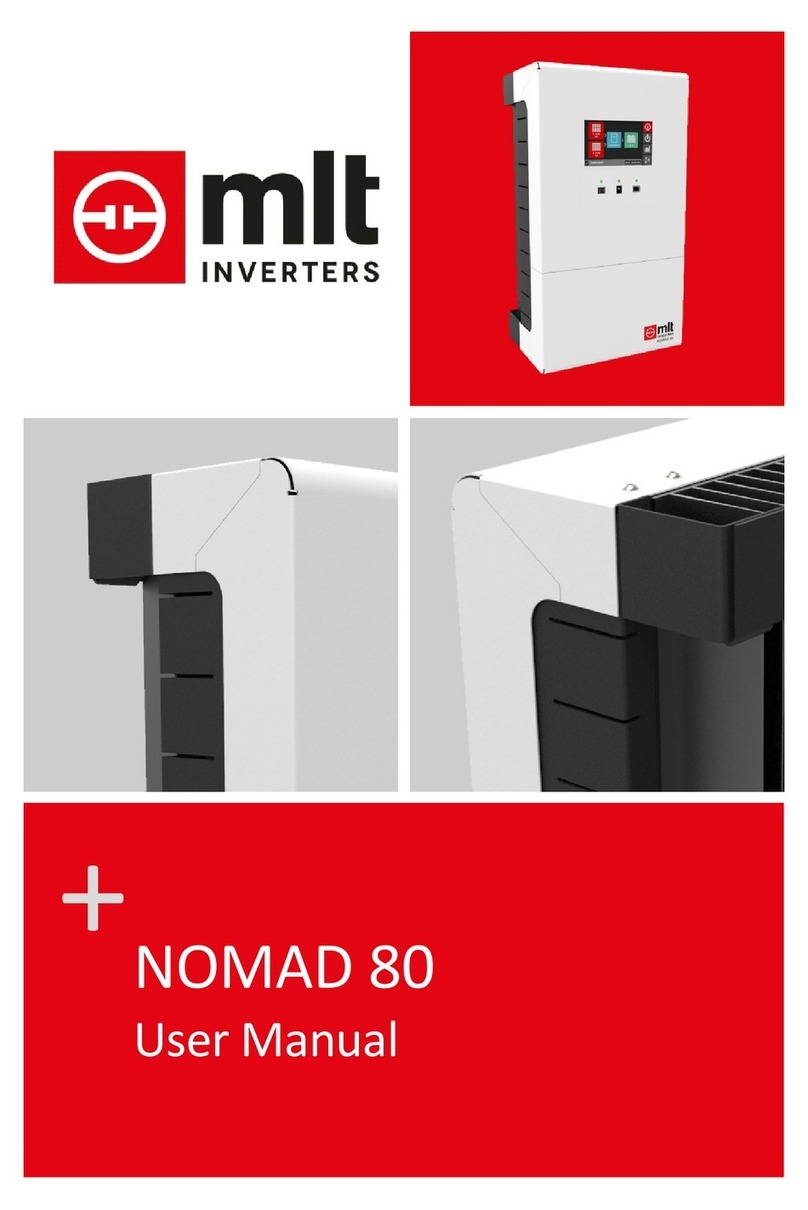
MLT Inverters
MLT Inverters Nomad 80 user manual
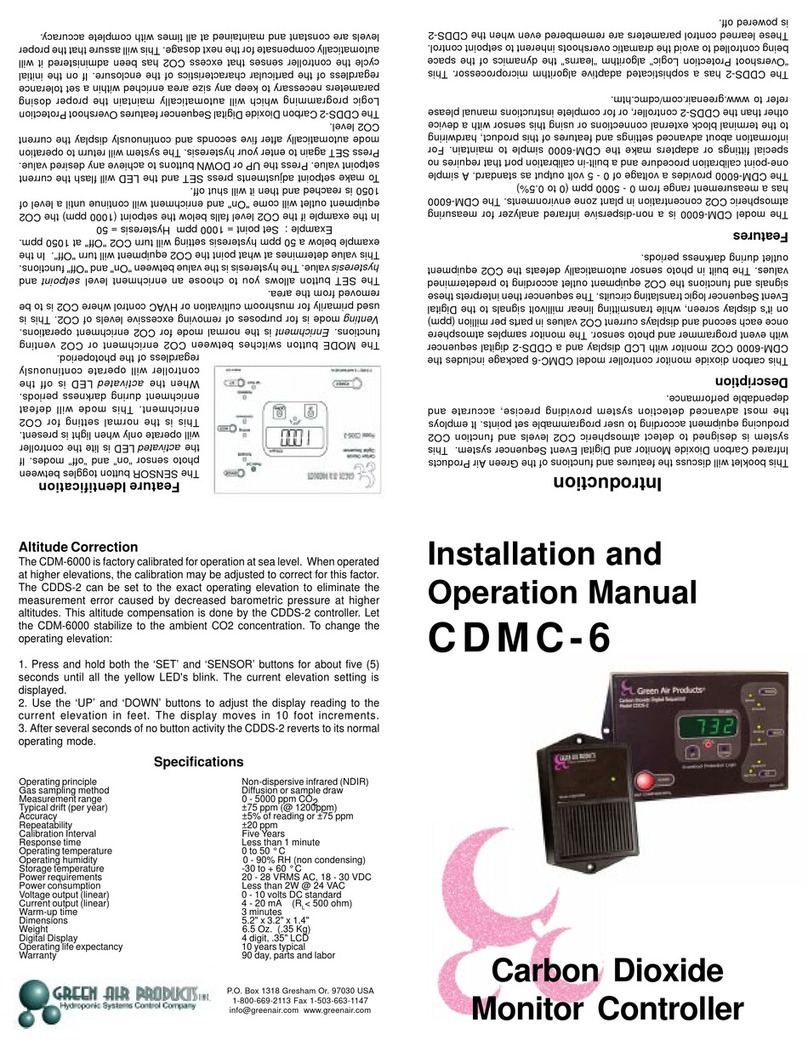
Green Air Products
Green Air Products CDMC-6 Installation and operation manual
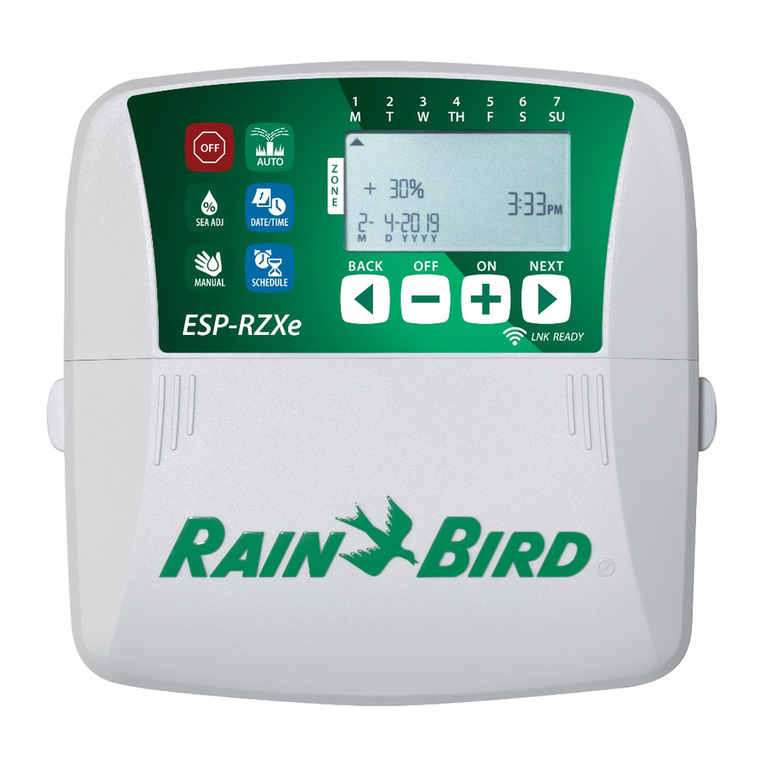
Rain Bird
Rain Bird ESP-RZXe quick start guide

